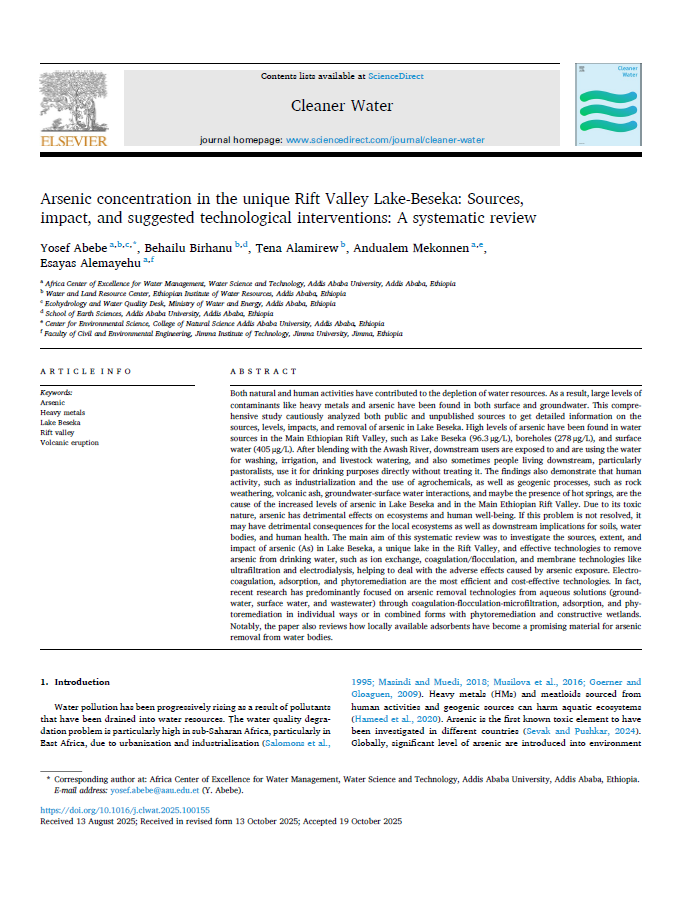Yosef Abebe, Behailu Birhanu, Tena Alamirew. Andualem Mekonnen, & Esayas Alemayehu (2025)
Both natural and human activities have contributed to the depletion of water resources. As a result, large levels of contaminants like heavy metals and arsenic have been found in both surface and groundwater. This comprehensive study cautiously analyzed both public and unpublished sources to get detailed information on the sources, levels, impacts, and removal of arsenic in Lake Beseka. High levels of arsenic have been found in water sources in the Main Ethiopian Rift Valley, such as Lake Beseka (96.3 µg/L), boreholes (278 µg/L), and surface water (405 µg/L). After blending with the Awash River, downstream users are exposed to and are using the water for washing, irrigation, and livestock watering, and also sometimes people living downstream, particularly pastoralists, use it for drinking purposes directly without treating it. The findings also demonstrate that human activity, such as industrialization and the use of agrochemicals, as well as geogenic processes, such as rock weathering, volcanic ash, groundwater-surface water interactions, and maybe the presence of hot springs, are the cause of the increased levels of arsenic in Lake Beseka and in the Main Ethiopian Rift Valley. Due to its toxic nature, arsenic has detrimental effects on ecosystems and human well-being. If this problem is not resolved, it may have detrimental consequences for the local ecosystems as well as downstream implications for soils, water bodies, and human health. The main aim of this systematic review was to investigate the sources, extent, and impact of arsenic (As) in Lake Beseka, a unique lake in the Rift Valley, and effective technologies to remove arsenic from drinking water, such as ion exchange, coagulation/flocculation, and membrane technologies like ultrafiltration and electrodialysis, helping to deal with the adverse effects caused by arsenic exposure. Electrocoagulation, adsorption, and phytoremediation are the most efficient and cost-effective technologies. In fact, recent research has predominantly focused on arsenic removal technologies from aqueous solutions (groundwater, surface water, and wastewater) through coagulation-flocculation-microfiltration, adsorption, and phytoremediation in individual ways or in combined forms with phytoremediation and constructive wetlands. Notably, the paper also reviews how locally available adsorbents have become a promising material for arsenic removal from water bodies.

